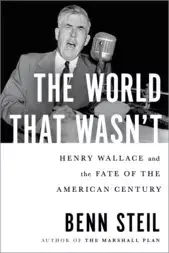Read an excerpt from The Sovereignty Wars.
In a new preface to the paperback edition, Stewart Patrick looks at the Trump administration’s pursuit of misguided policies over the past year (2018–2019) based on the mistaken idea that current trends in multilateral cooperation threaten American sovereignty.
When the United States withdrew from the Paris Climate Accord in June, President Donald J. Trump justified the move as a necessary reassertion of U.S. sovereignty. In The Sovereignty Wars: Reconciling America with the World, Council on Foreign Relations Senior Fellow Stewart Patrick challenges this kind of reasoning and asserts that international cooperation need not undermine sovereignty. “As transnational challenges grow, the nation’s fate becomes more closely tied to that of other countries, whose cooperation will be needed to exploit the shared opportunities and mitigate the common risks inherent in living on the same planet,” he argues.
More on:
Sovereignty is “one of the most frequently invoked, polemical, and misunderstood concepts in politics” observes Patrick, the James H. Binger senior fellow in global governance and director of the International Institutions and Global Governance program. He explains, “Often lost in these heated discussions is that sovereignty has at least three dimensions—authority, autonomy, and influence—and that advancing U.S. interests in a complex world sometimes requires difficult trade-offs among defending the U.S. Constitution, protecting U.S. freedom of action, and maximizing U.S. control over outcomes.”
Patrick urges the United States to consider striking “sovereignty bargains”—voluntarily trading off some autonomy, but only rarely authority—to gain influence and advance its interests on a variety of issues. He acknowledges that the trade-offs can be difficult but underscores that they are necessary for the United States to address global challenges such as arms control, nuclear proliferation, trade, border security, migration, terrorism, global pandemics, and climate change.
“Today the best measure of effective sovereignty is not the absence of foreign entanglements, but indeed the extensiveness of a country’s links with the outside world,” writes Patrick. “It is not about steering clear of international attachments, but about steering global forces and events in a positive direction.”
“The United States cannot successfully manage globalization, much less insulate itself from cross-border threats, simply on its own,” writes Patrick. The United States’ decision to join an international organization or sign a treaty therefore “represents an expression and exercise of sovereignty, not its abdication.”
A Council on Foreign Relations Book
More on:
Educators: Access Teaching Notes for The Sovereignty Wars.
 Online Store
Online Store

